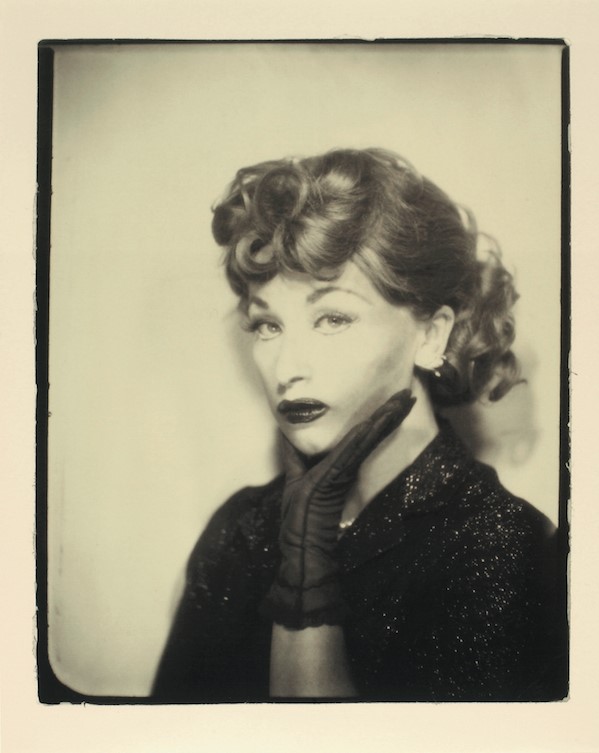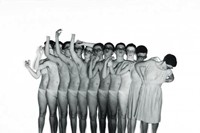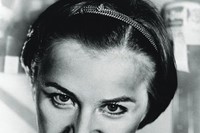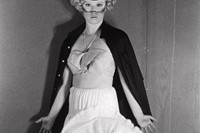Cindy Sherman is one of those rare contemporary artists whose work has always been of the moment. On Sunday, the Museum of Modern Art in New York will open the largest retrospective of her work to date, showcasing over 170 photographs from almost
Cindy Sherman is one of those rare contemporary artists whose work has always been of the moment. Since the 1970s she has explored themes of gender, class and contemporary identity through her posed self-portraits. She takes on the role of photographer, model and wardrobe mistress, disguising her physical self with make-up, wigs, costumes and prosthetics. These works examine the nature of representation and allow Sherman to role-play, morph and comment of gender, class and contemporary identity. On Sunday, the Museum of Modern Art in New York will open the largest retrospective of her work to date, showcasing over 170 photographs from almost five decades. The exhibition has been arranged thematically, allowing older works to hang in juxtaposition with more recent pieces, highlighting the diversity of a practice that has such regimented parameters. MoMa will also examine her rare fashion collaborations with Rei Kawakubo of Comme des Garçons, Marc Jacobs and Balenciaga, and her Sex series (1989) where she replaced her physical body with dolls and prosthetic limbs. AnOther spoke to the curator of the exhibition, Eva Respini, about Cindy Sherman’s personas and the success of her career.
Why was it important for MoMa to hold this retrospective and look back at Cindy Sherman’s career?
I would say she is one of the most important artists in contemporary art and certainly of her generation. What really convinced me that this was the moment for this exhibition was her 2008 gallery show at Metro Pictures, New York. It was a collection of her society portraits – they are larger than life, over nine feet tall, and of women who are of a certain age from high society such as politician’s wives or art patrons. They really blew me away. They are disparaging and tragic, focusing on women who are dealing with the demands of the 21st century in a youth and status obsessed society. When I saw these works I just thought this is an artist that has always had her finger on the pulse of visual culture. Her works in the seventies, eighties and nineties have always spoken to the issues of their time. In 2008 these were pictures that were made that actually presaged the financial collapse. Her show was in November and October was the momentous moment in New York when several financial institutions began crumbling. These were these larger than life pictures and their sheer size alone seemed to be a comment on overcompensation and wealth. They seemed to be so much of our time and of that moment. Looking at those images, I wanted to look at this artist that has always been very much of the moment and I wanted to look back.
"There is really an emphasis on her as a contemporary artist who been an important figure and who continues to take risks"
She has such a vast body of work including several collaborative projects. How did you go about selecting the works?
It was difficult. It really was in collaboration with the artist. We decided to start at the untitled film stills because they were her first mature works, and took it through to her more recent works. This retrospective places a real emphasis on her as a contemporary artist, and one of the first things audiences will see before they even enter into the galleries are her recent photographic murals. They have never been shown in North America. We will be premiering them here for our audiences and she has made them in a scale larger then they have ever been made before. There is really an emphasis on her as a contemporary artist who been an important figure and who continues to take risks. These new works will be the first and last things people see in the exhibition, so there is this focus on seeing the older bodies of work through the new bodies of work.
You have also work thematically…
Cindy is one of those rare contemporary artists that has household name recognition. Most people are aware of her work and I felt this was an opportunity to look at her career slightly differently and look at it thematically. If you think about what she does, there is a very narrow set of parameters – she photographs herself in the studio in character, costumes and disguises. What’s astonishing is how she is able to create this vast range of personas even though the parameters are quite narrow. I wanted to look at the themes that have been present throughout her career. For example, we have a room dedicated to fashion. She has taken on fashion commissions throughout her career, the first in 1983 and the most recent one in 2010. We will be hanging these works together, to allow audiences to see her work through a different lens but also to create juxtapositions. Another room deals with the idea of the grotesque. From the mid 1980s to the mid 1990s she removed herself her photographs and starting making still life’s with dolls and masks to stand in for her own body.
By placing these works together do you get a sense of how her practice has progressed?
There is certainly a progression because she has always been so consistent in the way that she works. You see an infinite mutability of identity, which I would argue, is the hallmark of our era right now. This is what touches me so much about her work. It speaks to a current moment of YoutTube fame and reality makeovers. So when you see the works from the 1970s to the very present, she is working within this set of parameters where she is able to have this astonishing array of characters and I think one will get a sense of this development throughout her career. There is this consistency where she continues to come back to the same ideas of identity and representation but through different points of view.
Why do you think her career has been so successful?
I think it is because she has this uncanny ability to address the major issues of our time. As I said before, in the 1970s she addressed the issue of representation in photography, which at the time when you think about post-modern critique and a booming media culture – it was very much of the moment. In the 1980s her work really addressed feminist issues, which was at the forefront of artistic and social dialogue. Then we come to the 1990s where she was making these much more grotesque abstract works in the era of aids and in the US there was a lot of censorship around the arts. In many ways her work was a response to that. In the 2000s I think she has more than ever embraced and critiqued this youth and status obsessed culture and where there is this over saturation of images that are more artificial than they have ever been – particularly in her murals where she is using Photoshop to alter her features. This was the first time she has ever done that, before she was using prosthetics and wigs. I think it is a comment on how images function in art culture today, being so incredibly airbrushed and artificial. The default is that we presume every image is a fiction and these works are on the pulse of the current debates and dialogues of visual cultures. She just has this ability of reflect those major ideas of each era in her work.
Cindy Sherman will exhibit from February 26 – June 11, 2012 at the Museum of Modern Art, New York
Text by Isabella Burley



